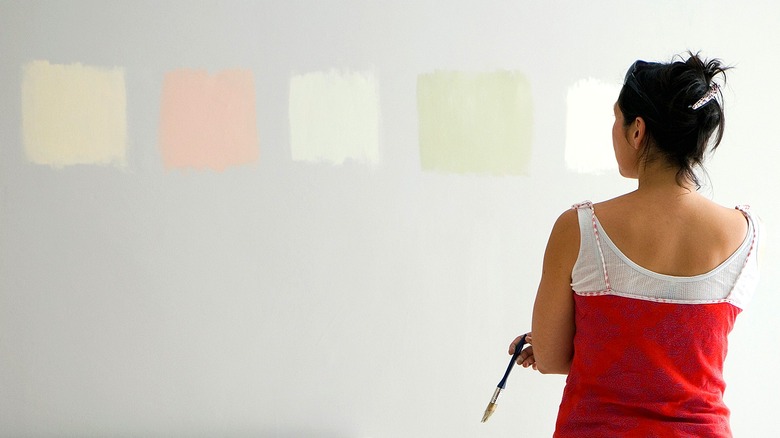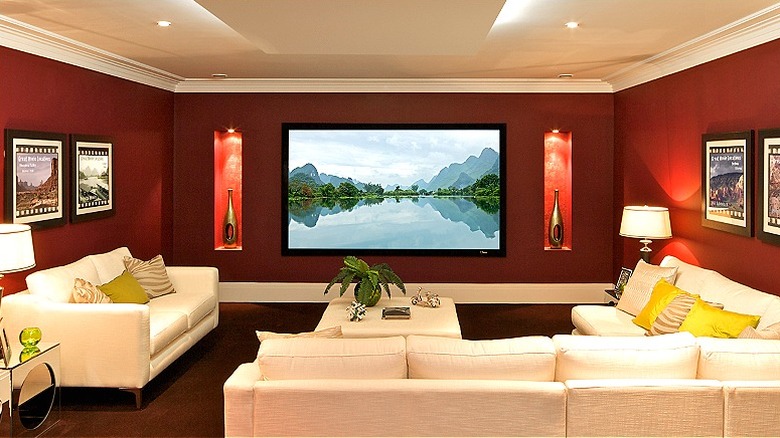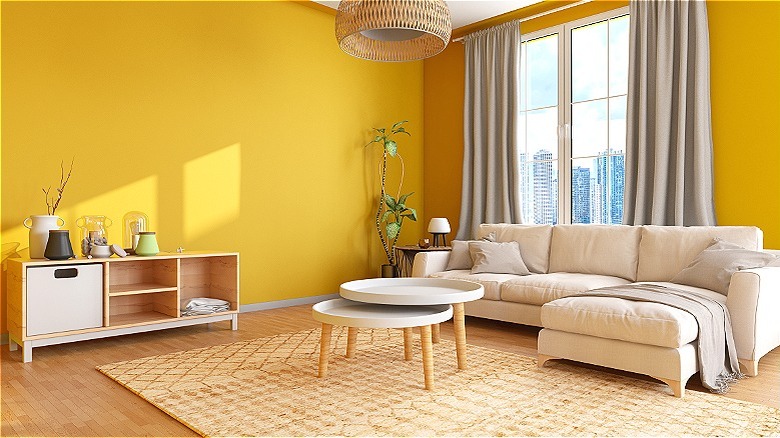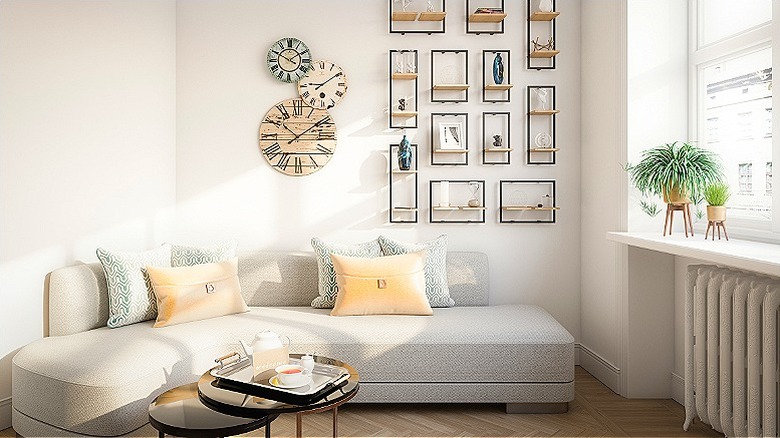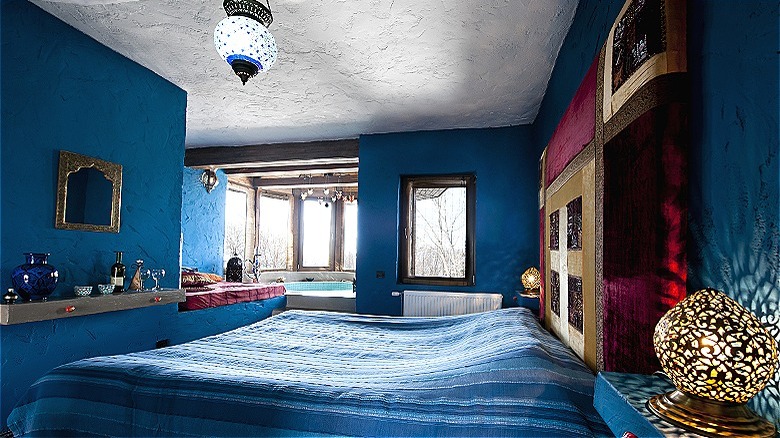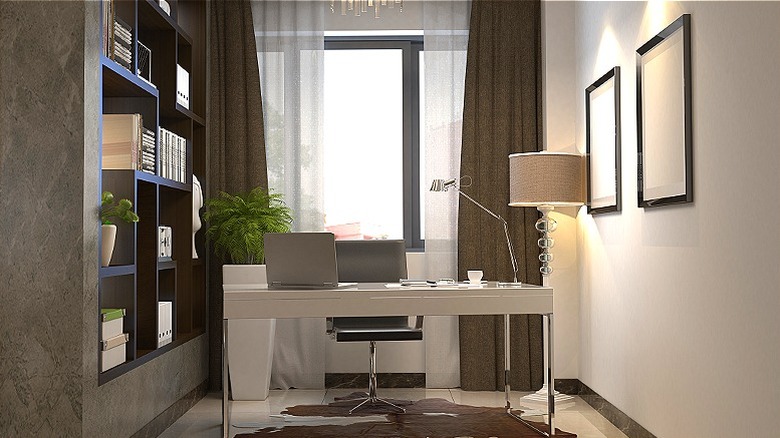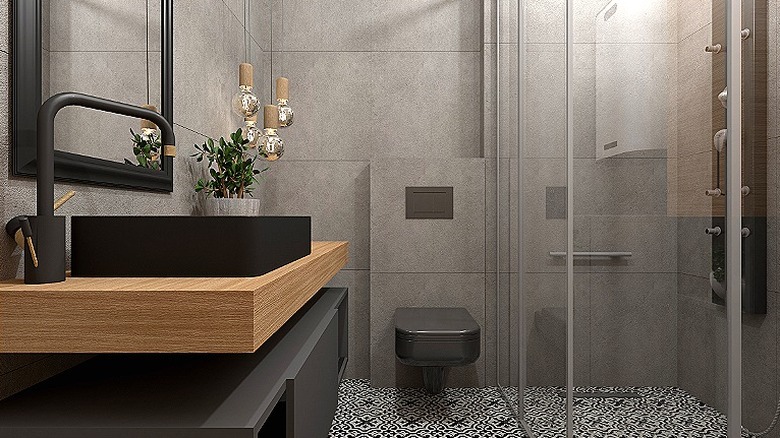Paint Colors That Will Make A Small Room Feel Even Smaller
You can create marvelous illusions with paint. For instance, covering a wall in vertical stripes or matching a room's trim to its wall color can give the appearance of higher ceilings. Meanwhile, painting furniture the same hue as the room it's in can make the space feel less cluttered. And if you lack natural light, some paints can help up the brightness for you. However, paint can also prove a negative for a room. Specifically, if you choose the wrong paint color for your walls, it can make a small room feel even smaller.
With rooms limited in space, painting them the wrong color can be a nightmare. You could end up with a living area that feels even smaller in size and possibly claustrophobic. If you didn't think color could have such an impact, think again. There are a few paint colors you should avoid so your small space doesn't feel cramped. It doesn't mean the entire color is off limits, but particular tints, undertones, and finishes change whether that color of paint makes the room feel open or closed.
1. Dark red
Red draws the eye, and it's this drawing-in effect that can work against a small room. In particular, a deep red tone can make a room feel more closed in, especially as the dark color absorbs natural light. While red can work well for an accent wall, it's not the best choice for a smaller room's primary color.
2. Bright yellow
Bright colors help to open a space, but you have to be wary of hues that lean on the overpowering side, like yellow. "While yellow definitely has some great qualities, if it's a bright tone ... it can feel too aggressive and overwhelming in a room," interior designer Shea McGee told Real Simple. In a small room, you don't want to feel trapped in a shrinking smiley face. A light yet muted tone is the key if you're set with having yellow on the walls.
3. Pure white
White is a popular choice for any room, but not every shade of white is perfect for your small space. Turns out, there's a crucial difference between, say, chiffon and ivory. Keep in mind that pure white will emphasize shadows in a room and, consequently, make it feel smaller. When it comes to white paint, if your bedroom gets a lot of natural light, it's safe to use bright white paint, which will work with the sunlight. However, for shadier areas, you'll want to go with a crisp white with warm undertones.
4. Deep blue
Dark colors, meanwhile, are advancing. For example, a deep blue can trick the eye, making the surroundings feel closer than they really are, and in an already small room, that isn't ideal. Further, a dark blue that's also warm-toned can double that feeling. When it comes to blue, there are creative ways to incorporate blue into home décor that won't comprise the feel of the footprint.
5. Warm gray
Gray is a happy medium, a neutral color. However, the wrong tone can create a cramped room. While warm gray is inviting, the cozy effect can make a small room feel smaller. "Cooler shades will bounce light across the room and increase the sense of space," color consultant Patrick O'Donnell shared with the magazine Livingetc. So try a gray on the cool side, something with blue or green undertones to expand your room.
A word on using matte paint finishes
For all paint colors, steer clear of using a matte finish for your small room. Similar to dark hues, a matte finish will absorb light, creating a stifling effect. This finish is best for exterior of low-traffic areas in a home, while satin or eggshell finishes can help make a small space feel larger by reflecting light.
